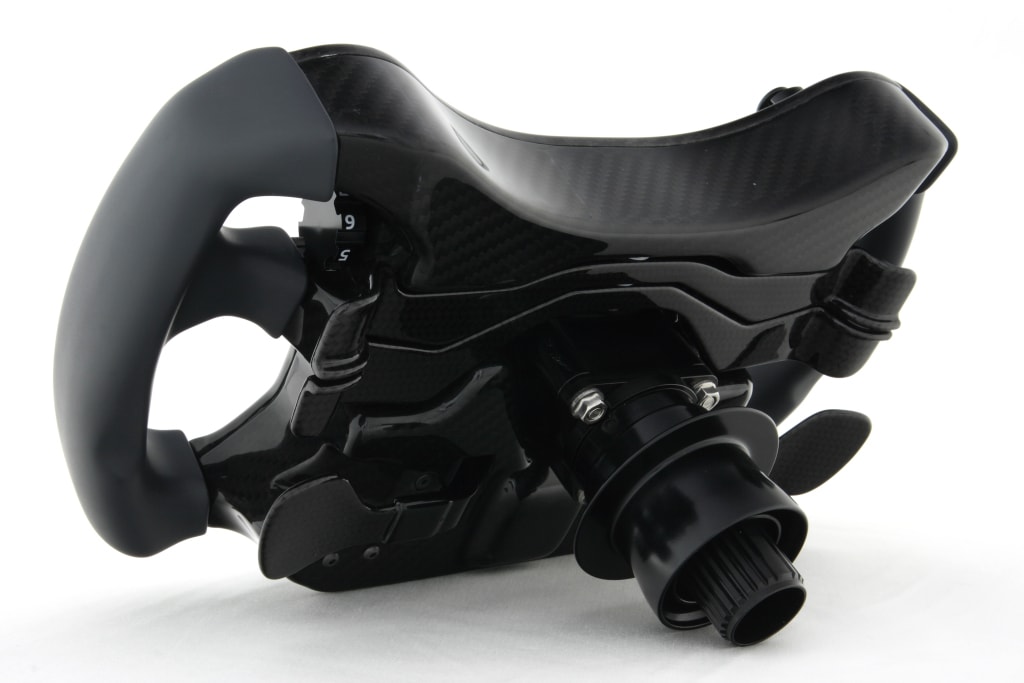Thanks J.E. for the clarification of the rule aspect.
This brings us back to an oberservation, which DaveW has made earlier (maybe in a different forum).
Red Bull seems to struggle with front brakes (wear and some other issues).
So to gain the advantage of the increased mass flow within the rules, could they tell the drivers to keep
a bit of throttle while braking (left foot braking).
I´m sure a clever pedal or foot rest design or a small imperfection on the inside of the monocoqe, will help the driver to "remember" the position.
Then as it seems that, within the min and max position of the throttle, the relationship between pedal and
throttle at the engine, don´t need to be linear, the engine map will open the throttle more, redard the ignition
to reduce power, alter the fuel map to what they think is needed under this condition, and have the benefit
of increased exhaust gas flow/mass flow to help their DD and generate more downforce overall.
To control the speed of the car, you would need to brake more (for longer) - preferable with the front.
This would put more stress on the front brakes, then a car, which uses engine braking to slow it down, and
which does not have a "blown" diffusor.
Maybe, slowly a bit of a pattern emerges here, and some things start to make sense.
Then I would expect the rear brake wear to increase, as they would be forced to run with a rearward brake bias.
Rather I would suspect the ordinary reason for high brake wear; running too high brake temperatures as they try to minimize the brake cooling inlets to minimize drag.
Probably F1 cars are running air intake throttless engines and idle via fuel injection control since EFI technology now is super high tech, a way around the rule book perhaps. What they can also do is have the intake throttle partly closed as fixed set up and let the fuel injection systems do the blow job...sorry, I mean, you know what I mean so maybe it closes up to 80% or more then the efi controls anything below that. This might be the reason why some cars are running out of fuel. And they don't have to pop it like wrc cars, if ignition timing is moderated.

With most engines using electronic throttles the throttles are used to control the idle speed in some way, but that doesn't require the throttle to be much opened. Idle speed is then fine tuned with ignition advance. Idle ignition timing is usually a bit ******** so that engine torque can be increased by ignition advance if there is a rapid load increase on the engine (high alternator load for instance).
That's enough to for example keeping a turbocharger running for a while, but I'd think that for any aerodynamic effect to create significant downforce numbers considerably more flow would be needed. Throttle should be fully or at least almost fully open and the fuel injection should be at least partly cut as the thermal load to the exhaust side would increase hand in hand with the decrease of the engine efficiency. In other words, all the calorific value of the fuel that normally would be transferred into work would now be transferred into heat and out of the exhaust with proportionally increased exhaust flue temperature. Even if the exhaust side would be able to withstand the heat, one would expect to see a flame or two.
Just academically speaking - as I said I don't think such engine maps are allowed anyway because that would be a free pass to implement TC on the side.
Cutting the injection would probably be unwise as it introduces free oxygen in the exhaust manifold which can then react with excess fuel from other cylinders with a high thermal load as the result.
The thermal load on the engine will increase as a result of retarding the ignition, that's why injecting more fuel is a good idea. Plus it helps increase exhaust mass (fuel mass + air mass = exhaust mass).
With the ignition ********, since the combustion still occurs in the cylinders it can be done without visible flames.
That's the point: there is no feed-back from the wheels to the SECU. OK, one could try to plant a bypass, but that would be plain cheating (like many other things one could try, flexing wings or magic fuel let's say) and not twisting the use of the SECU for the letter but against the intent of the law.
If you place a bypass with wheelspin feedback you don't even need to deal with SECU maps, you can just cut power from the sparks and you just added another computer to the system.
There is feedback. The cars got wheel speed sensors and with one of these
http://www.mclarenel...it_IF_HIU-3.asp attached to each hub all the data becomes availible on the CAN bus which the SECU is connected to. So it's only a quastion about what the SECU does with the information it has access to, not what information it has access to. To prevent the information being used in an way prohibited by the regulations the FIA checks the SECU software.























